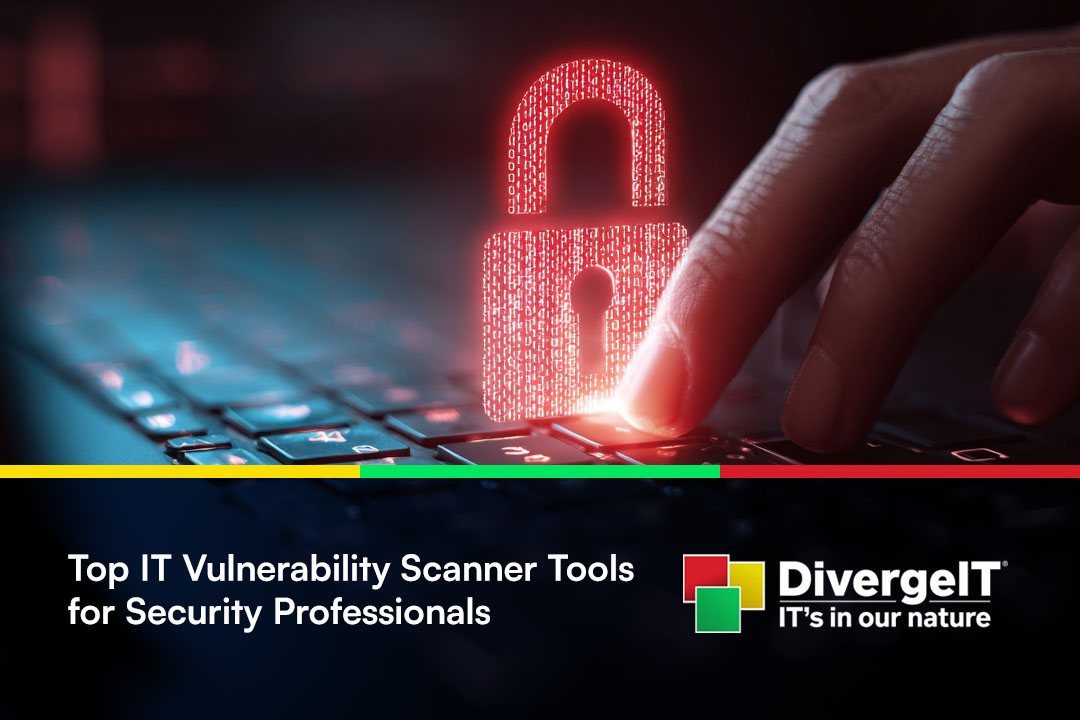July 11, 2025

Understanding and managing IT security risks is critical for any business, especially those with growing digital footprints. An IT vulnerability scanner helps identify weaknesses in your systems before attackers can exploit them. In this blog, we’ll explain what these scanners do, how they support IT vulnerability assessment, and why they matter for your overall security posture. We’ll also explore tools like Nessus and OpenVAS, discuss how to detect vulnerabilities, and share practical tips for implementation and compliance.
An IT vulnerability scanner is a software tool that scans your network, systems, and applications to find security weaknesses. These weaknesses, or vulnerabilities, could be outdated software, misconfigurations, or missing patches that attackers might use to gain access.
These scanners are a key part of vulnerability management. They help IT teams detect issues early, prioritize risks, and take action before a breach occurs. Many scanners can also automate parts of the process, making it easier to stay secure without adding extra workload.

IT vulnerability scanners vary in features, scope, and use cases. Let’s break down the most important aspects to understand.
Scanners use databases of known vulnerabilities to check your systems. They compare your software versions, configurations, and open ports against these databases. If something matches a known issue, it’s flagged for review.
There are several scan types, including network scans, web application scans, and endpoint scans. Each type targets different parts of your IT environment.
Scanners generate reports that list detected vulnerabilities, their severity, and suggested remediation steps. These reports help IT teams prioritize what to fix first.
Many scanners integrate with broader vulnerability management platforms. This allows for better tracking, remediation, and compliance reporting.
Scanners help meet compliance standards like HIPAA, PCI-DSS, and SOC 2. Regular scans show auditors that you’re actively managing risk.
Open-source tools like OpenVAS are free but may require more setup. Commercial tools like Nessus or Qualys offer more features and support.
How often you scan depends on your risk level. High-risk environments may scan daily, while others scan weekly or monthly.
Using a scanner offers several advantages for security and operations:
Vulnerability assessment is the process of identifying, analyzing, and prioritizing security weaknesses. An IT vulnerability scanner is a core tool in this process. It provides the data needed to assess where your systems are most at risk.
Assessment goes beyond detection. It involves understanding the potential impact of each vulnerability and deciding how to respond. This might include patching, configuration changes, or even removing risky software.
Choosing the right scanner depends on your environment, budget, and goals. Here’s a closer look at top options.
Nessus is a widely used commercial scanner known for its accuracy and ease of use. It supports a wide range of systems and integrates well with other tools.
OpenVAS is an open-source alternative. It’s powerful but may require more technical setup. It’s a good choice for teams with Linux experience.
Qualys offers cloud-based scanning and asset management. It’s ideal for businesses with remote or hybrid workforces.
This tool focuses on risk prioritization and remediation tracking. It’s useful for teams that need detailed reporting.
Burp Suite specializes in web application scanning. It’s often used by security professionals during penetration testing.
Built into Microsoft environments, this tool helps detect vulnerabilities across endpoints and integrates with Microsoft 365.
Tenable.io is the cloud version of Nessus. It’s designed for scalable scanning across large environments.

Implementing an IT vulnerability scanner requires planning. Start by identifying which systems need scanning. This includes servers, endpoints, cloud infrastructure, and web applications.
Next, choose a scanner that fits your needs. Consider ease of use, integration options, and reporting features. Set a regular scan schedule and define who will review and act on the results. Finally, document your process to support compliance and audits.
To get the most from your scanner, follow these best practices:
Following these steps improves your security posture and reduces the risk of a breach.

Are you a business with 50–300 employees looking to improve your IT security? Our team understands the unique challenges growing companies face when trying to protect their systems and data.
We help you choose, implement, and manage the right IT vulnerability scanner for your needs. Whether you're focused on compliance, cloud security, or reducing your attack surface, DivergeIT provides the tools and support to keep your business secure.
A vulnerability scanner is a tool that detects known weaknesses in your systems. It performs scans to identify outdated software, open ports, and misconfigurations. A vulnerability assessment, on the other hand, is the process of analyzing and prioritizing those findings.
The assessment helps you decide what to fix first based on risk. It often includes manual reviews and supports compliance efforts. Together, they form a complete vulnerability management strategy.
Scan frequency depends on your environment and risk level. High-risk systems may need daily scans, while others can be scanned weekly or monthly. Regular scanning helps detect vulnerabilities early.
Automated tools make this easier by scheduling scans and sending alerts. Consistent scanning improves your security posture and helps meet compliance requirements.
Yes, open-source scanners like OpenVAS can be reliable if configured correctly. They offer strong detection capabilities and are widely used by security professionals.
However, they may require more technical expertise to set up and maintain. Businesses should weigh the trade-offs between cost, ease of use, and support.
Scanners can detect a wide range of issues, including outdated software, missing patches, weak passwords, and misconfigurations. Some also scan for web application flaws.
The types of vulnerability detected depend on the scanner’s database and capabilities. Regular updates ensure the scanner can find the latest threats.
Cloud-based scanners can monitor virtual machines, containers, and cloud services. They help detect misconfigurations and compliance gaps in cloud environments.
These tools are essential for businesses using platforms like AWS or Azure. They provide visibility into your cloud infrastructure and support secure operations.
While scanners don’t prevent breaches directly, they help reduce the risk by identifying and fixing weaknesses. Early detection is key to stopping attacks before they happen.
Using tools like Nessus or Qualys as part of your security tools stack strengthens your defenses. Combined with remediation and monitoring, they support a strong security posture.